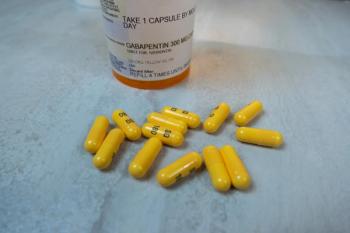
- Drug Topics September 2020
- Volume 164
- Issue 9
Boston Medical Center Reduces Opioid Use in Surgical Patients
Pharmacists, nurses, and physicians work together to combat the overuse of powerful pain relievers.
As the pandemic dominates headlines, the United States continues to face another major public health crisis—the opioid epidemic.
One bright spot is at Boston Medical Center, where the city’s safety net hospital’s pharmacy team has reduced inpatient opioid use among surgical patients by 41% since 2017 and cut discharge opioid prescribing for surgery patients by 25%. The initiative involved pharmacists across the hospital’s ambulatory, inpatient, and retail pharmacy departments.
Kevin Horbowicz, PharmD, BCPS, associate director of inpatient clinical pharmacy services, described witnessing the opioid overdose epidemic as his driving force. “It was very central to us at Boston Medical Center… where it’s having a big impact on our patients, many of whom struggle with opioid use disorder and other disorders,” he said.
Success depended on coordinating with the hospital’s information technology team and more than 20 surgical specialties. Today, surgeons can order sets in the electronic health record that prompt them to prescribe agents such as acetaminophen to manage patients’ pain.
The Program Takes Off
Boston Medical Center’s pilot program included procedures such as abdominal surgeries, which tend to involve large incisions and “a lot of pain,” said David McAneny, MD, the medical center’s chief surgical officer. He was so impressed by how well using agents such as angiotensin-converting enzyme inhibitors and acetaminophen managed postsurgical pain that he supported including all surgeries in the program.
In line with this effort, the hospital was implementing the enhanced recovery after surgery (ERAS) protocols, McAneny said. This multimodal, multidisciplinary approach to the care of surgical patients includes surgeons, anesthesiologists, and surgical care staff. ERAS protocols generally include minimally invasive approaches rather than large surgical incisions, and early mobilization.
Pharmacists Make an Impact
Before this initiative, even a patient with mild pain would typically be discharged with 60 to 90 oxycodone pills, Horbowicz said. That’s dangerous for an individual who might become dependent or whose medication is accessible to other household members, he explained.
Pharmacist participation during rounds with the surgical team is key, McAneny said. The pharmacist can provide insight on topics such as appropriate medications, when to stop antibiotics, and when to switch from an intravenous to an oral route. McAneny, who mostly performs endocrine surgery, said he hasn’t prescribed opioids for postsurgical recovery in 10 years.
He also emphasized the importance of patient education. For example, McAneny tells patients who have had thyroid surgery that neither oxycodone nor acetaminophen will take away the resulting sore throat, which should subside by the end of the day.
Lessons Learned
Developing a consensus among more than 20 surgery subspecialties proved the most difficult part of implementing the program, according to Horbowicz. The fields of orthopedics, plastic surgery, and trauma have very different needs, he said.
Another challenge involved scheduling a meeting with the chair of neurosurgery to discuss the program, he added. Still, he highlighted Boston Medical Center’s “collaborative, multidisciplinary culture,” with physicians, nurses, and pharmacists working well together. “That was part of the secret sauce,” Horbowicz said.
As a result of Horbowicz’ leadership, Boston Medical Center’s Opioid Utilization Improvement Team won the Pharmacy Health-System Award from the Massachusetts Society of Health-System Pharmacists.
Articles in this issue
about 5 years ago
A Partnership to Optimize Medication Use and Patient Outcomesabout 5 years ago
Biosimilars May Lead to Improved Competition and Lower Costsabout 5 years ago
Prevent Medication Errors in Autoimmune Diseaseabout 5 years ago
A Look at the Year in Genericsabout 5 years ago
The Rise of AIabout 5 years ago
Adult Pneumonia Management and Preventionabout 5 years ago
Medication Therapy Managementabout 5 years ago
The Pharmacist’s Role in Generic SubstitutionNewsletter
Pharmacy practice is always changing. Stay ahead of the curve with the Drug Topics newsletter and get the latest drug information, industry trends, and patient care tips.





















































































































































